Surprise from the PCGS graders
 gscoins
Posts: 314 ✭✭✭
gscoins
Posts: 314 ✭✭✭
I just got an email from PCGS about my most recent submission. I have a 1930 British sixpence that I always thought was very pretty. I decided on a lark to get it graded, figuring it would come back with a mid-level uncirculated grade. As it turned out, the graders considered it to be a proof, specifically a proof 64. It is apparently the only proof coin of this date/denomination they have ever graded; all but 8 of the acorn-style PCGS-graded proof coins for George V are the 1927s (which I believe came in a set).
There is a considerable difference in price (according to Krause and a older British catalog I have) between the mint state and proof coins for this year, so it looks like I've had a piece of luck.
Here's a photo (TrueView): 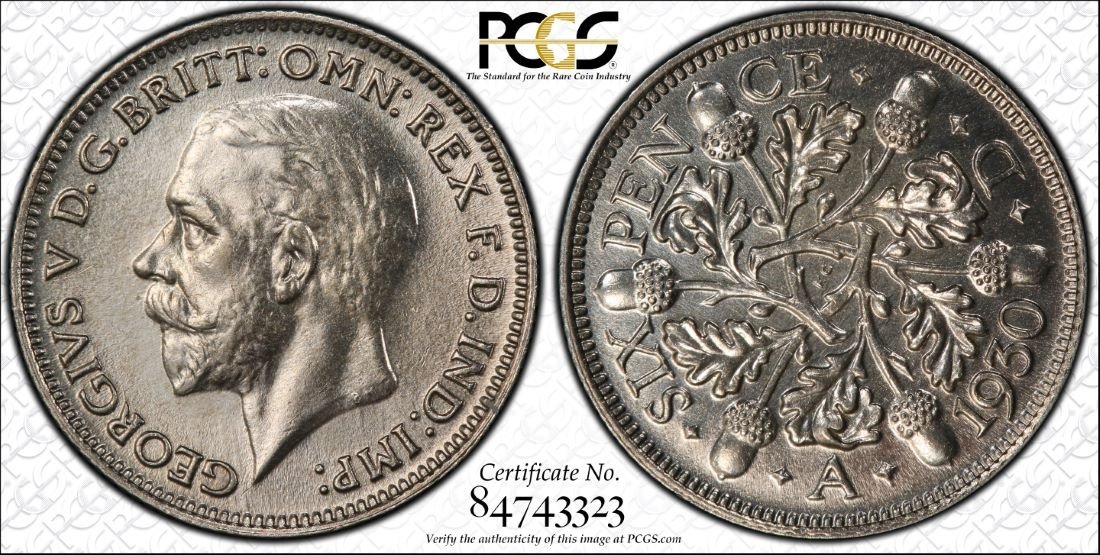
I cannot seem to find any mintage information for the coin. Can anyone suggest a place to look?
Comments
terrific score - congrats!
I would have been fooled too.
IG: DeCourcyCoinsEbay: neilrobertson
"Numismatic categorizations, if left unconstrained, will increase spontaneously over time." -me
It is a beautiful coin. Unc=$30, Proof=$700 catalog.
Congrats! What are the diagnostics of the proof vs business strike for these?
Sweet coin! Good deal.
My YouTube Channel
Excellent!
Nice proof,congrats.
That is a very pleasant coin there. I will try to find a picture of a confirmed proof. MANY of the silver G5 coins are quite proof like in appearance, and the TPGs have misidentified (IMO) many of the crowns and smaller denominations that are actually very pleasant PL specimens. Unfortunately, many actual proofs do not have cameo (and in the cases of the crowns probably some specimens that are just that - specimens & have not received full proof treatment).
Further complicating the issue is that the devices are relatively low relief with not much refined detail in areas like hair and beard. I will do some homework this weekend and look at a specimen from a complete proof set.
From the provided pictures, I see a couple of issues:
1 - the obverse rim is not quite so square as I would like to see, especially 9-3 o'clock.
2 - the fields of both obverse and reverse demonstrate a coarse appearance and not as smooth and mirror-like as I would hope
3 - even on a coin struck with shallow dies with little detail, I'm a bit concerned with the obverse hair and the beard, particularly the area just below and to the front of the ear.
4 - the brow of G5 is not as well defined as I would expect
Well, I'm off to work unfortunately. I do like the coin, only am concerned with the coin's true status as a [VIP] proof of record coin.
Well, just Love coins, period.
I really appreciate 7jaguars's expert and comments and would very much value any further observations he can come up with. The photo I posted is the (relatively) low resolution version, so I am posting here the much higher resolution copy (12 MB vs, 177KB), in hopes that it may help him/her come to some additional conclusions. I must say I have my own doubts; my PCGS submission included a 1937 proof penny that was no-question-about-it proof. This sixpence didn't look proof at all to me, hence my surprise.
Another brief story: Some years ago I purchased a British India 1/2 anna from Randy Weir (the 1/2 anna is much tougher than the ubiquitous 1/4 anna). PCGS graded it as a proof 63, which really surprised me. Later, I sent it on Jeremy Katz to sell for me. Before the sale, Jeremy got back to me with his doubts about the coin being proof and we ended up sending it to PCGS for confirmation. Sure enough, they came back with "mechanical error" (a term that really doesn't fit - PCGS should be willing to admit they made a mistake by calling it "grading error" or some such) and re-graded it an MS 63. I hadn't bought it from Randy as a proof, so I wasn't harmed by the error. In short, they do make mistakes and may have done so in this case. I would be reluctant to send it back, though, as the associated expense might end up being mine.
Thanks again to 7jaguars.
Yes, very good points and thanks for a picture blowup! I hesitate on this forum to extend too far with commentary but can always be reached via PM, itself evidently a monitored entity. I some times wonder "who's on first" when it comes to grading. If this be wrong as far as designation, then you should see the hash made out of matte proofs of both the standard 1902 year and the proofs and patterns of later years including the 1920s and 1930s, even up to the 50s (look up the Pf61 matte 1951 halfcrown that I think is still shown on the PCGS census as an example).
Anyway, this weekend I should be able to locate a 1930 6d that is part of a set that I am sure as one can be is an actual proof. The really good one is the 1930 Halfcrown in proof with only one known - the crowns and halfcrowns tend to have been submitted more frequently.
Well, just Love coins, period.
1997-present
Here are a couple of lousy pictures - the 1930 proof is from Spink 1998 but toned and doesn't show too well, so I included proof 1931 and 1932 pictures.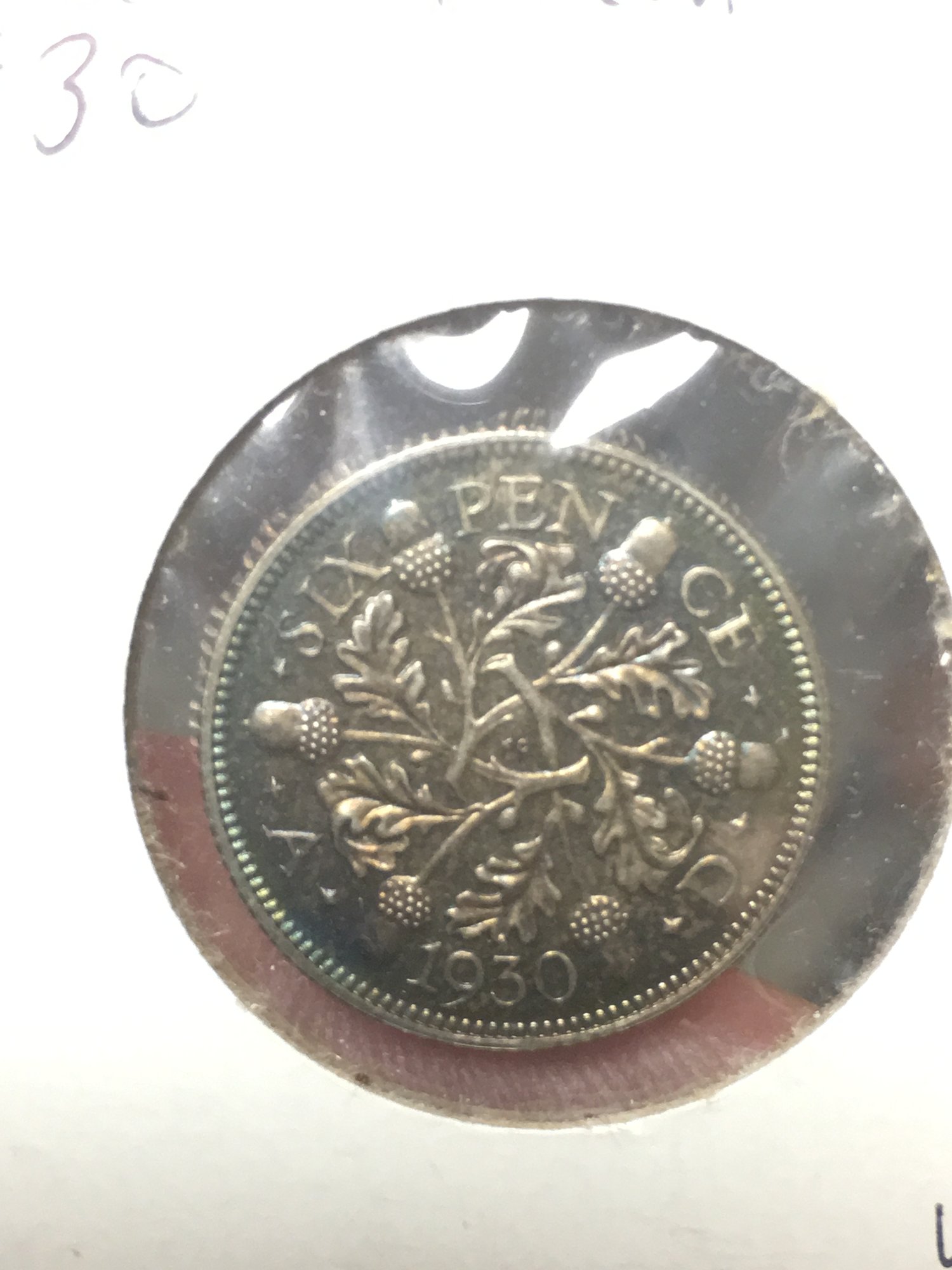
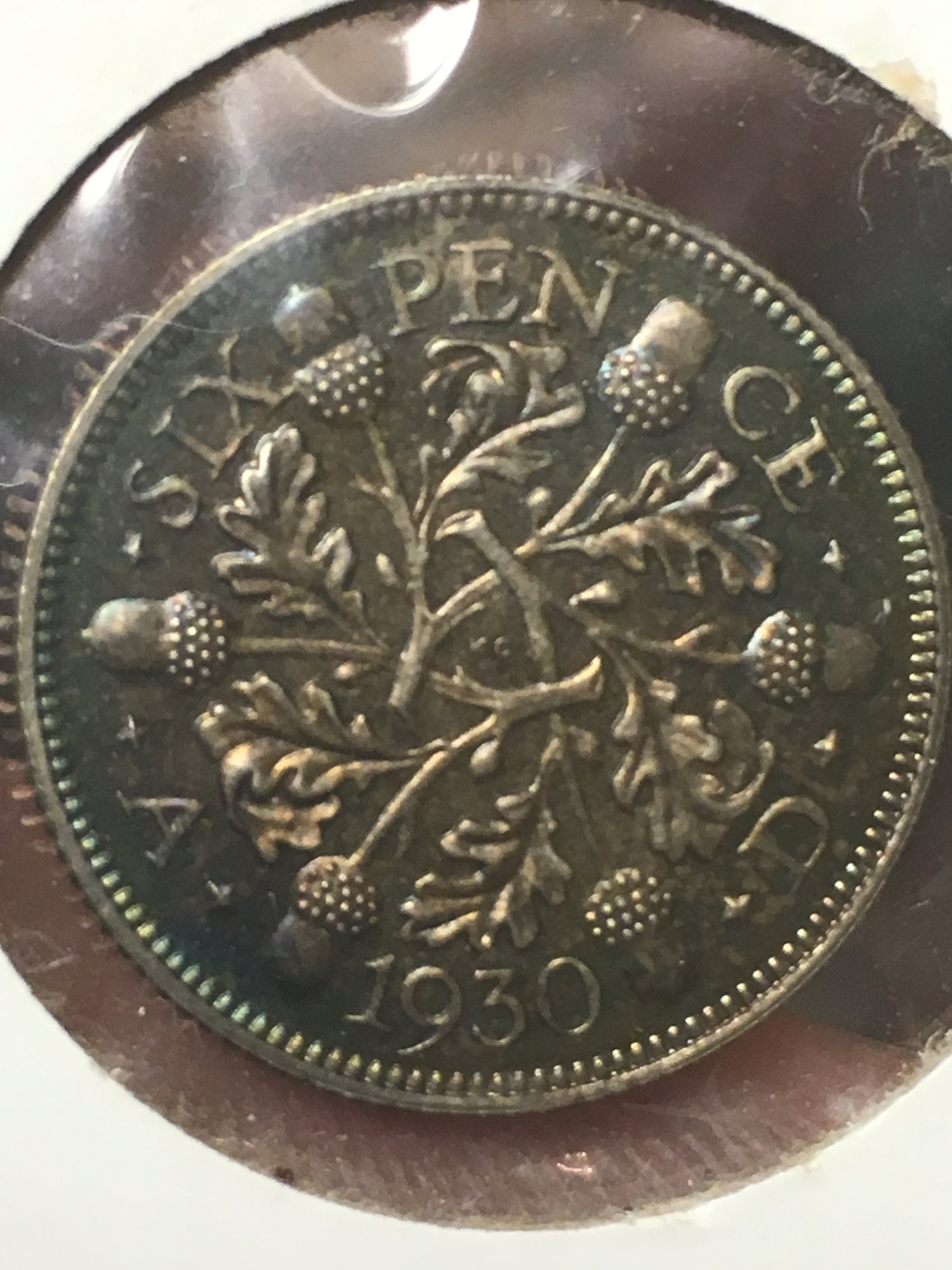
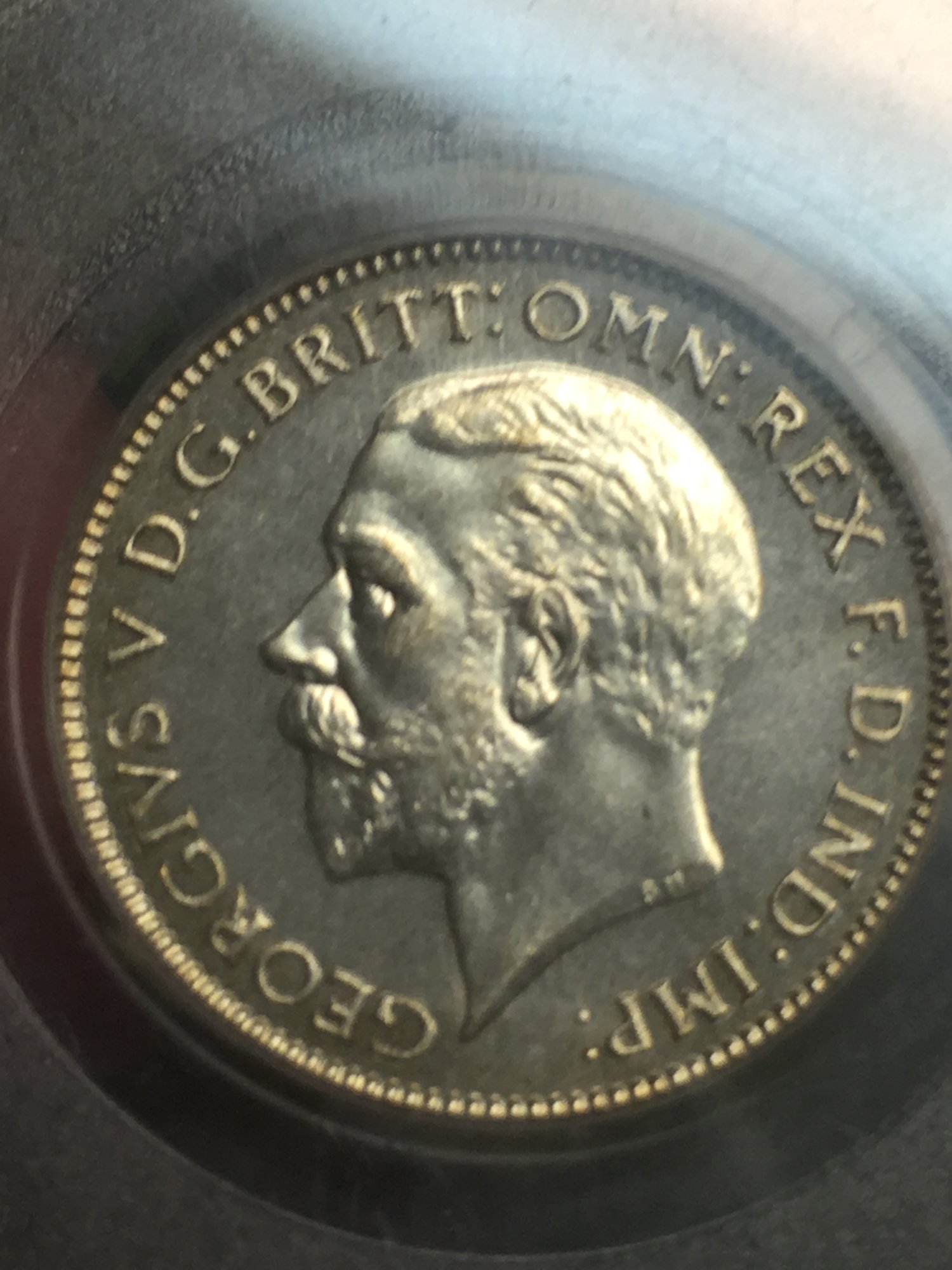
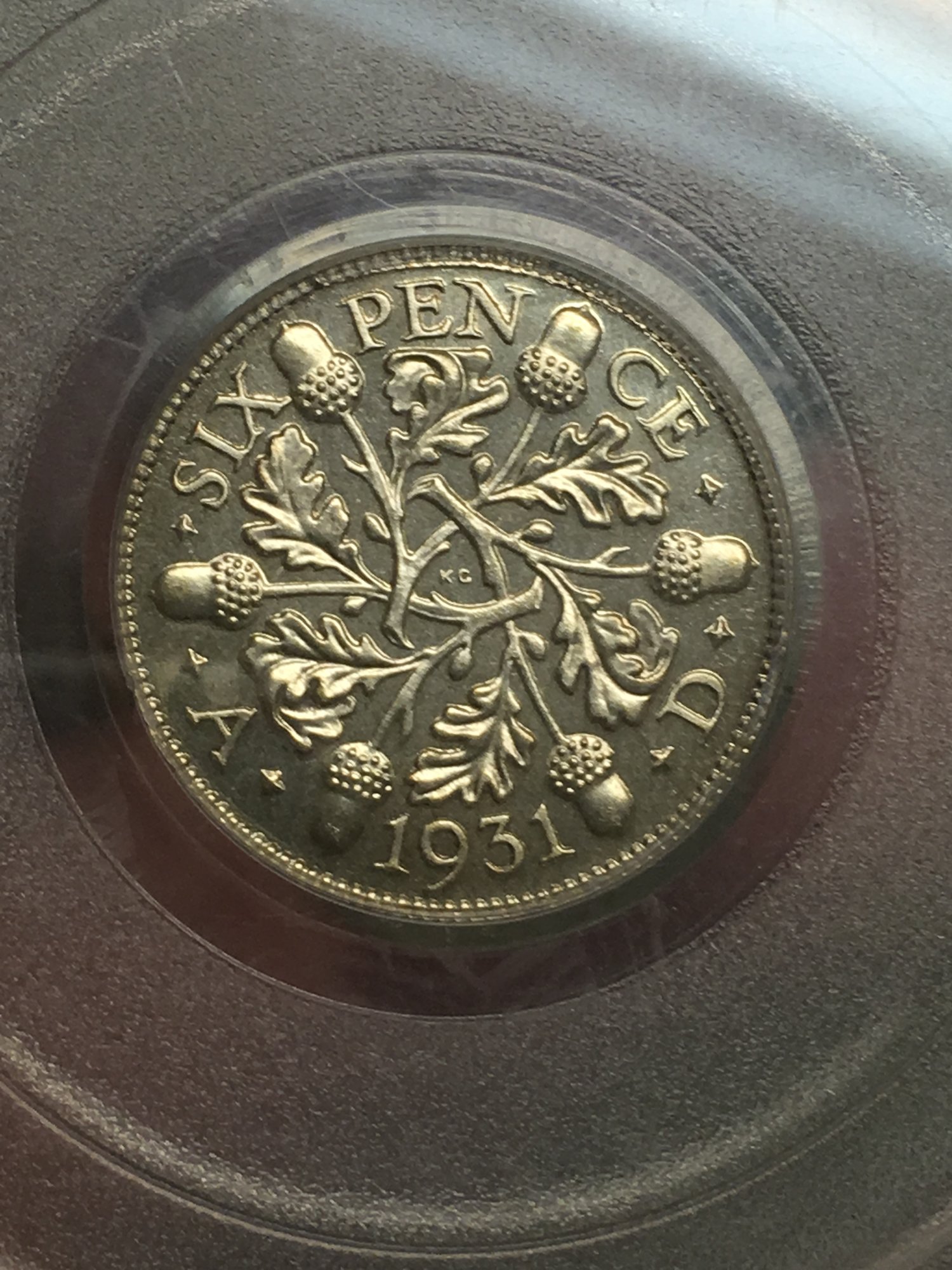
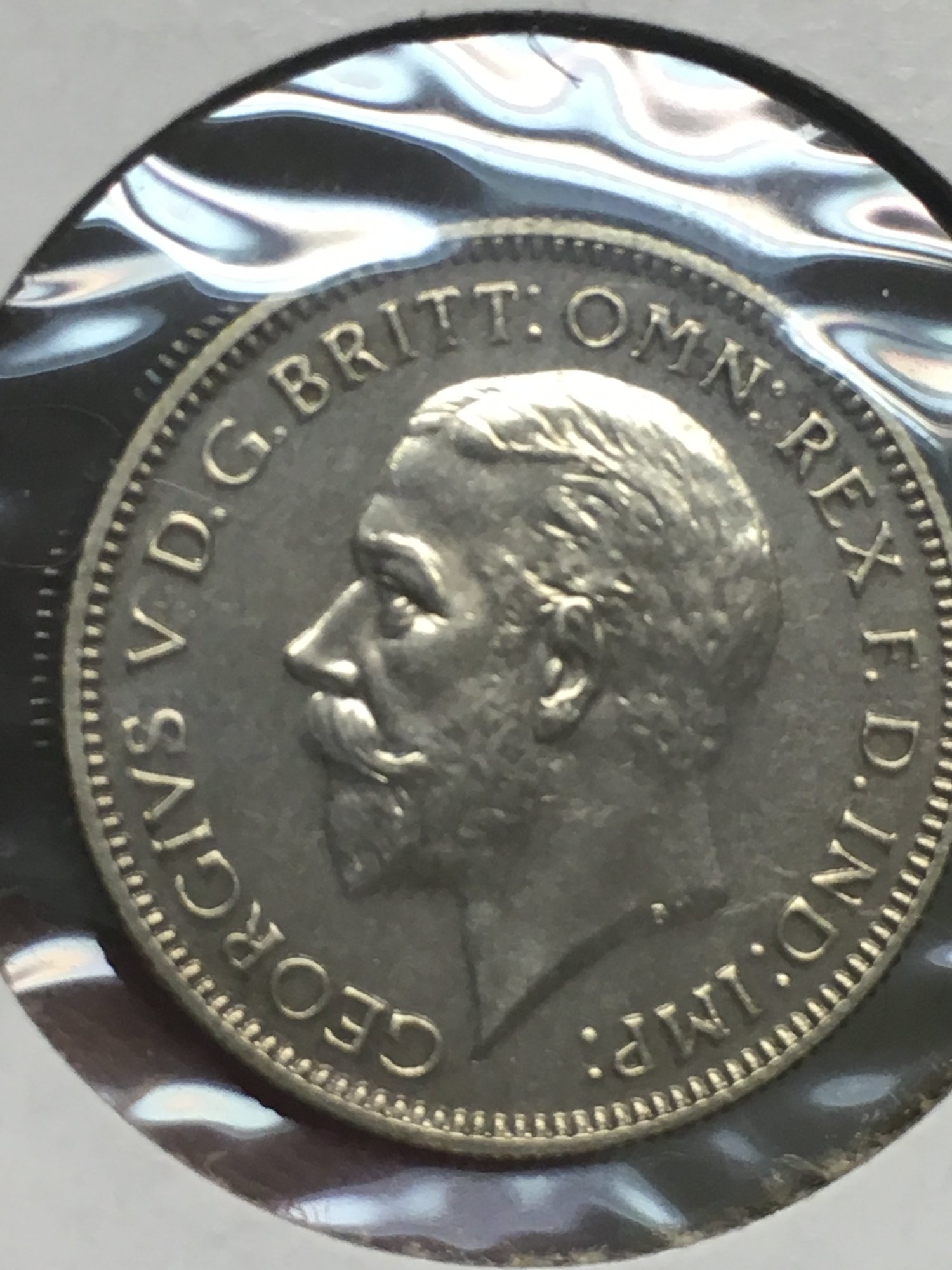

As you can see, the appearances are quite different. In fact all are from Spink Numismatic Circulars from the 1998-2000 period.
Well, just Love coins, period.
I'll see if I can do better tomorrow with these terrible hand held iPhone pictures...
Well, just Love coins, period.
I see nothing on the OP's coin to call it a Proof. Nevertheless, PCGS says it is. They don't throw opinions around freely as I've just done.
Gotta, say, first your points above are good. However, you need better images than these to make your case. Seriously.....
Best, SH
True is that and I apologize, the OP coin listed IMO and with all due respect is not a proof - I will say that I am quite familiar with the series to say the least. There are some very nice PL currency coins, of which this is one. I have caught the TPGs out on more than a few of these proofs, sadly the Crowns are one example and even one of their "matte proofs" that is clearly not. PM me if you have any doubt as to my references, as this is not the forum.
Well, just Love coins, period.
I enclosed a couple of the other coins as the 1930 is quite toned so hard to photo hand held through the celo. I think especially on the 1931 that you can see the "liquid" quality of the fields on both obverse and reverse, and especially such traits as the depth of the hair delineation, etc.
Well, just Love coins, period.
This thread has been very informative, especially the posts from 7jaguars. The 1930 seems to me to have a different, more reflective surface than the other acorn type I have (an ungraded 1936 that looks BU to me), which could suggest it is a proof. On the other hand, 7jaguars suggests the 1930 may be a prooflike currency coin and I am in no position to dispute that conclusion. I was thinking of listing on Ebay (and offering it here first), but perhaps the better course of action is just to hang on to it. It is certainly a pretty coin!!
Anyway, thanks everybody!
The fields on 7 Jags examples, as well as the sharpness of the rims, to me is different than the piece graded as proof by PCGS. But I'm no expert on proofs of this period.
He shoots! He SCORES!!!!!!!
Yes, score but also underscores as I don't think they should have gone out on a limb with this one. I am virtually certain that this is not a proof even though it is a very nice currency specimen.
Well, just Love coins, period.
I don't think the piece has the square and sharp rims of a proof, but does seem to have the scallop shaped rims of a nice currency piece. That's my take on it.